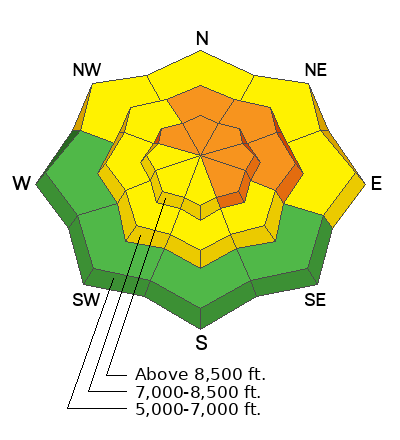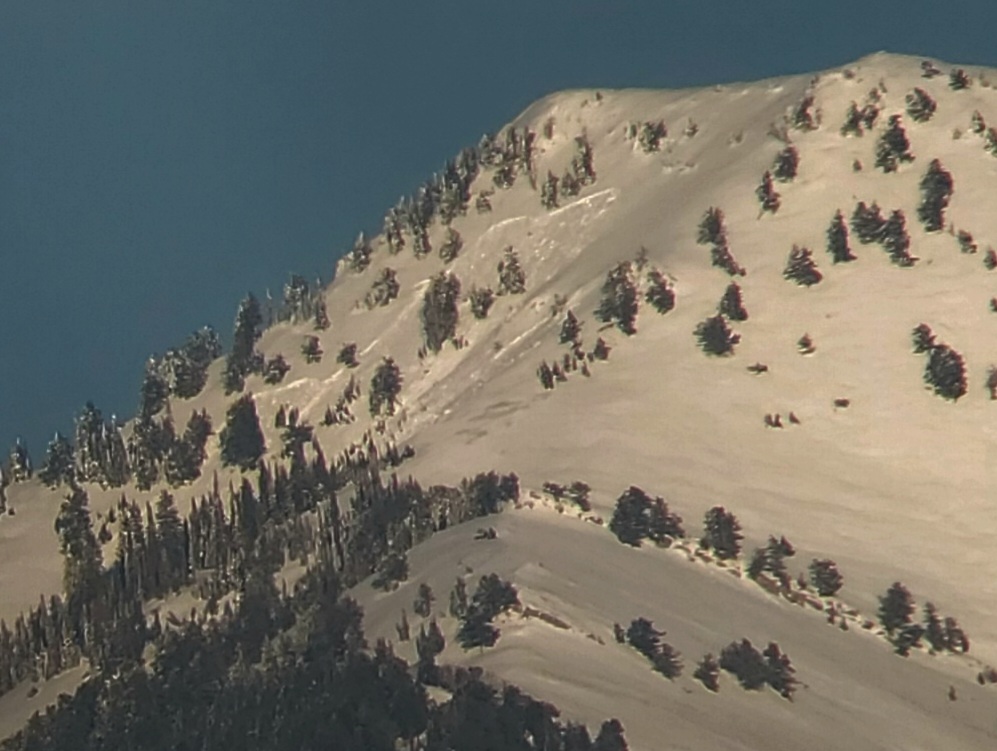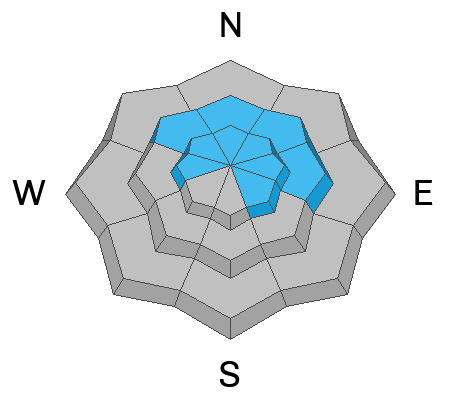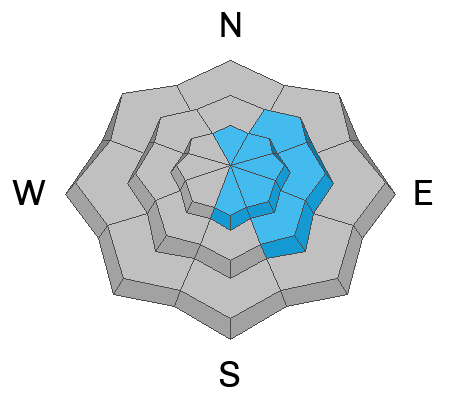The 5th Annual Avalanche Awareness Week is December 3-10. The week's goal is to save lives through activities that promote avalanche awareness, education, and safety. We have a variety of events around the state.
Find an event near you. Join the Utah Avalanche Center and Utah State University for a FREE Avalanche Transceiver Training on Saturday, December 9, from 10 AM - 12 PM at the USU Aggie Legacy Fields in Logan.
Register here. Around 6 inches accumulated in the Central Bear River Range yesterday. I'm reading 4" new snow from overnight at the new Card Canyon weather station. About 8" is visible this morning on the lit interval stake on the Beav's webcam. The Tony Grove Snotel at 8400' reports 1.3" SWE from yesterday and overnight, and it's showing a total snow depth of 51 inches. It's 13 F this morning on Paris Peak, and the wind is blowing from the west-northwest at 18 mph, gusting to 33 mph at 5:00 this morning.
Today will be rather stormy in the mountains, with heavy snow and significant drifting expected. 8500' temperatures are expected to drop to around 14 F today, 8 to 12 inches of new snow is expected to accumulate on high slopes, and west-northwest winds will blow around 25 mph with 40 mph gusts. Wind chills will be as low as -10 F tonight, northwest winds will moderate a little, and snowfall should taper off. Expect crisp, sunny weather in the mountains tomorrow, with high temperatures only around 18 F above 8000'.
We observed numerous recent natural avalanches in the Central Bear River Range that occurred late on Sunday and overnight Monday. Several more large avalanches were observed from a distance Wednesday in Wood Camp and the Mt. Naomi and Wellsville Mountain Wildernesses. Some were 2 to 3 feet deep and several hundred feet wide.
You can visit our
avalanche page to check out the recently reported avalanche activity from the Bear River Mountains and the Wasatch Range.
A large natural avalanche was observed in the Mt. Naomi Wilderness above Richmond. (Eric and Amy Flygare)











